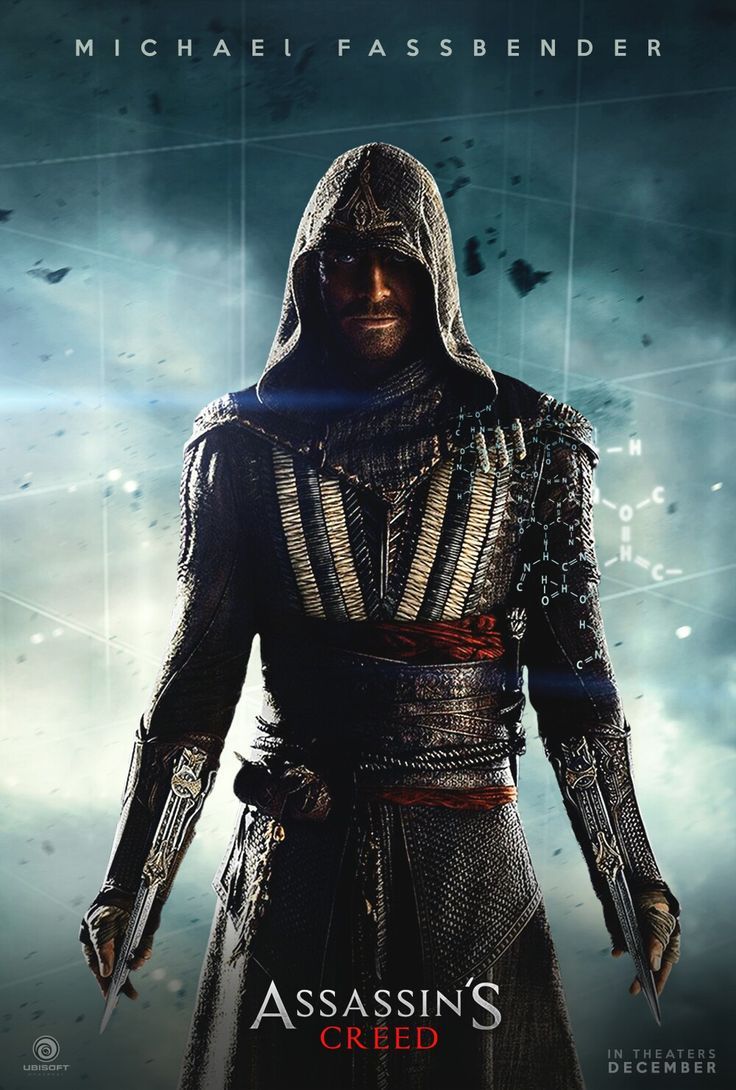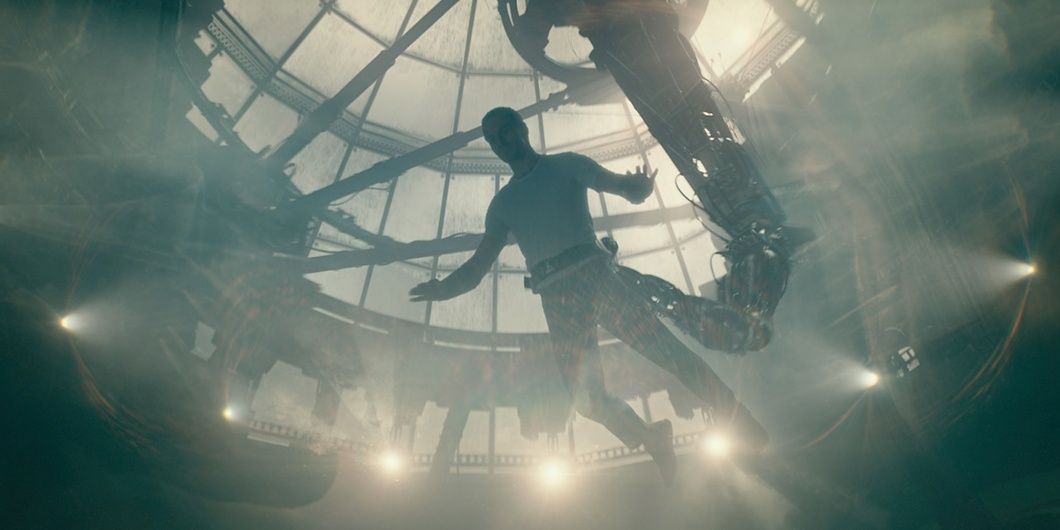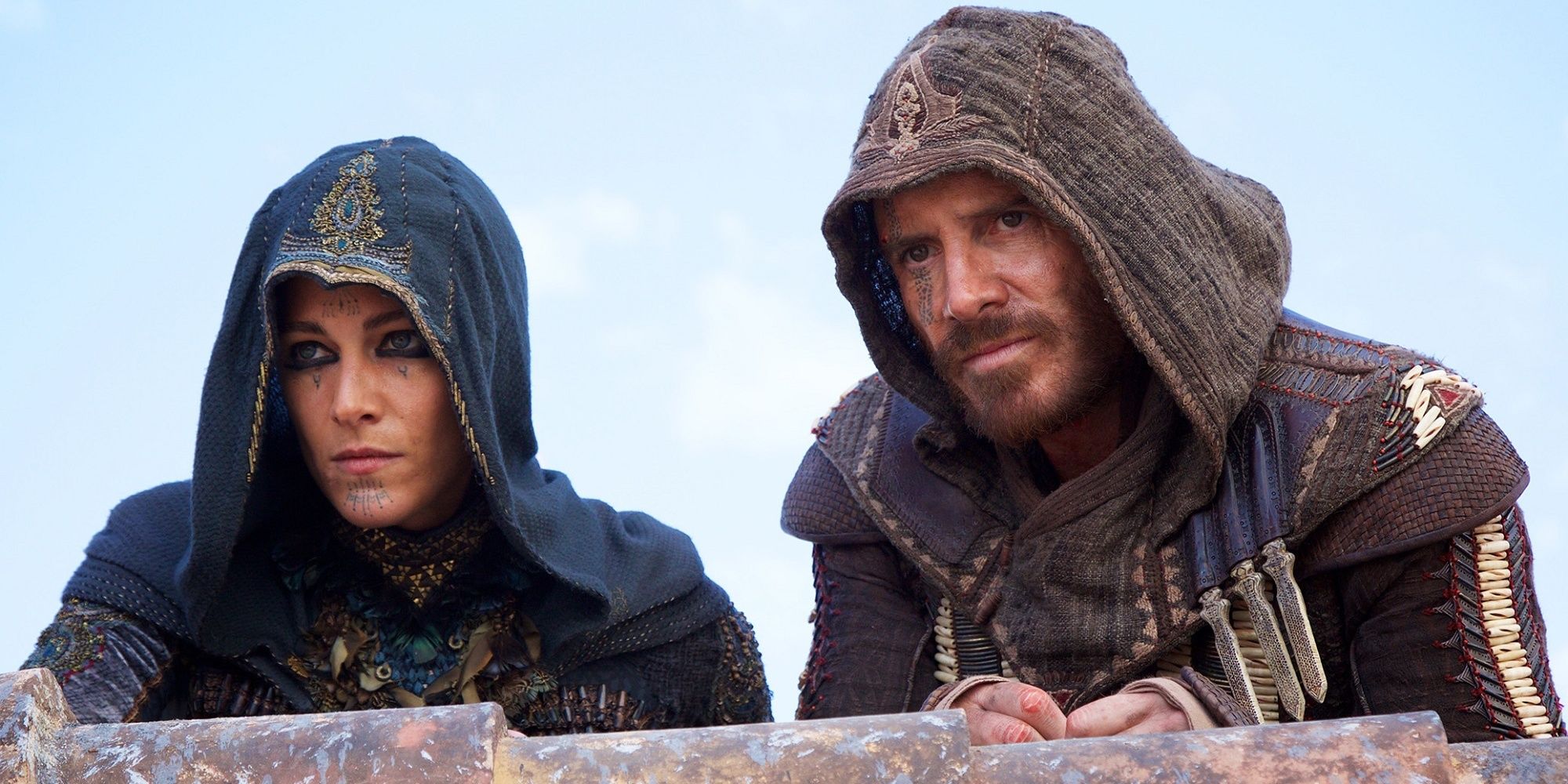Changing the Animus in ‘Assassin’s Creed’ Made for a Good Movie
The Big Picture
- Changing the depiction of the Animus in the Assassin’s Creed movie was a key factor that made the adaptation successful, allowing for a more engaging present-day narrative.
- The film serves as an unofficial spiritual sequel to 2015’s Macbeth, bringing back the same visual and tonal moodiness that captured audiences.
- The collaboration between director Justin Kurzel, cinematographer Adam Arkapaw, and actors Michael Fassbender and Marion Cotillard enhanced the film, allowing it to stand on its own, incorporating elements from the game while maintaining a unique and captivating storytelling style.
Assassin’s Creed, the 2016 film adaptation of Ubisoft’s video game franchise of the same name, was panned across the board by both critics and general audiences. However, as one of its advocates, you’re about to join one of those defenses. You can read the 18% reviews on Rotten Tomatoes, or you can scour message boards like Reddit to gain a sense of disdain. But when you do, two main factions of naysayers will make themselves known: Fans of the games who’d face predictable disappointment and newcomers who found zero investment. There’s not much to be done for the latter; it either worked for you or it didn’t. For the first group, this writer would encourage a second viewing, keeping a few new considerations in mind.
Assassin’s Creed follows Cal (Michael Fassbender), who’s kidnapped by a secretive organization called the Abstergo Foundation, at once saving him from execution (a sentence Cal was given after being convicted of murder) and subjecting him to their own goal of finding an artifact called the Apple of Eden. The Apple, which supposedly contains the key to controlling humankind’s free will, has been sought after by a group called the Templars for centuries. Now, the Templars make up the Abstergo Foundation, and they’ve created a device that can allow someone to access their ancestor’s memories, stretching back to the time of Apple’s last known location. A group called the Assassins, however, have been protecting and hiding the Apple from the Templars since the very beginning. Cal’s ancestor, Aguilar de Nerha, was the last Assassin aware of the Apple’s whereabouts, so the Templars need Cal to access his memory.
Would it have had a better chance as a television series? Almost certainly. Should Disney be forgiven for thwarting the chances of Assassin’s Creed sequels after purchasing 20th Century Fox? Absolutely not, but that is what it is. What we’re left with is still a concise, fun, and skillfully executed film that can be enjoyed by fans of the game, if given the proper chance.

Assassin’s Creed
Callum Lynch explores the memories of his ancestor Aguilar de Nerha and gains the skills of a Master Assassin, before taking on the secret Templar society.
- Release Date
- December 21, 2016
- Director
- Justin Kurzel
- Cast
- Michael Fassbender, Marion Cotillard, Jeremy Irons, Brendan Gleeson, Michael Kenneth Williams, Charlotte Rampling
- Runtime
- 1h56m
- Main Genre
- Fantasy
- Genres
- Science Fiction
- Studio
- 20th Century Fox
- Box Office
- $240.7 million
How Changing the Animus in ‘Assassin’s Creed’ Helps the Adaptation
First and foremost, we have to talk about the Animus. Among fans of the Assassin’s Creed video games, one of the most commonly noted grievances is how Kurzel’s adaptation chose to depict the Animus. In both the games and the movie, the Animus is a device that allows a user to access and relive the memories of their ancestors. Most commonly, it’s depicted as a reclining chair that the user sits within in order to search back into their ancestral memory. The idea, to put it simply, is that our DNA stores the past lives of generations before us, acting as a genetic memory bank stretching back centuries.
In the film, this concept remains practically untouched. Cal is recruited to use the Animus to access the life of Aguilar de Nerha, of whom he’s a descendant, in order to discern the last known whereabouts of the Apple of Eden. It’s a story original to the film, rather than a remake of one of Ubisoft’s games, but it fits into the game’s lore using all the same mechanics — save for one thing: in the film, the Animus is essentially a giant mechanical arm that grants its user a wide range of movement, mirroring the physical actions of the ancestor they’re accessing.
The decision to opt for this change represents the wider reason that Assassin’s Creed is an excellent adaptation, and it’s a byproduct of the film’s need to focus more heavily on the present-day narrative than the period-set action that makes up the bulk of the video games. When you’re the player, you’re in control of the character’s every action. In those cases, it’s perfectly fine (better, even) to focus on the past’s action-heavy sequences.
How the ‘Assassin’s Creed’ Movie Animus Raises the Stakes
The stakes are high because the success of each moment depends on the player’s choices and skill, but when you’re simply an audience member watching a movie, it doesn’t quite work the same. This isn’t Back to the Future or Avengers: Endgame — the characters don’t alter the course of history or create new branches of time when they do anything in the past. With the Animus, you’re simply accessing memories and reliving them. You’re a viewer.
With that, we have to bulk up our investment in the present-day setting, which is what the film set its sights on. So, you bring the Animus to life. If he’s just sitting in a chair, we’re just asking for another instance of X-Men: Days of Future Past, which sees Wolverine (Hugh Jackman), prone and motionless while his consciousness is transported into the past. This only worked for that movie because the scenes surrounding Wolverine’s still body were filled with the action of countless other X-Men and their foes. With Assassin’s Creed, we know that our character can’t change the past, so the stakes for those moments are already rather low. Thankfully, our present-day story was brought to life by both the visual thrill of a lively Animus and a larger piece of the narrative’s pie.
Justin Kurzel and Michael Fassbender Brought the Best Elements of ‘Macbeth’ to ‘Assassin’s Creed’
Another gleaming positive of the film that stands on its own, without dependence on adherence to the Assassin’s Creed franchise, is the way in which it serves as an unofficial spiritual sequel to 2015’s Macbeth. Yes, Macbeth. You have to squint your eyes and avoid thinking about it too hard, but if you were at all enthralled by that particular adaptation of Shakespeare’s tragedy, you’d be pleased with how easily Assassin’s Creed brings you back to the same abundance of visual and tonal moodiness.
Assassin’s Creed was the follow-up venture after that particular iteration of Macbeth for multiple members of the team. Michael Fassbender, who played the titular Scottish lord, had been attached to Assassin’s Creed for some time, and would eventually serve as the catalyst that brought director Justin Kurzel onto the project immediately following Macbeth. It was actually Fassbender himself that brought Kurzel aboard. Fassbender, who was also one of Assassin’s Creed‘s producers, encouraged Kurzel to join after the excellent experience they shared recreating Macbeth. “We got very close while making that because it was so tough, and then I was editing Macbeth, and Michael had already been working on Assassin’s Creed,” Kurzel recalled in an interview with The Independent. “He just started talking more and more about it; and then one day he said, hey, do you want to do it? And I’d started getting really seduced by his conversations about it, especially about genetic memory and the notion of having access to your ancestors’ memories. I thought it was a really cool and interesting idea.”
It didn’t stop there, thankfully. Kurzel brought one of Macbeth‘s most beneficial ingredients with him — cinematographer Adam Arkapaw, and Lady Macbeth herself, Marion Cotillard, would join as Fassbender’s costar once again. Kurzel and Arkapaw’s synchronicity made Macbeth the lullaby of heartache that it is, one of those rare instances in which you forget all notions of a film’s runtime and find yourself completely lost in a visual trance.
How the ‘Assassin’s Creed’ Movie Built Its Own Path
Between a change in Animus and creating its narrative from the foundations of Hamlet, both of these helped to enhance what Assassin’s Creed was able to become. Justin Kurzel and Adam Arkapaw’s combined vision turned what could have been another lackluster attempt at recreating gameplay in a new medium into a piece that pulled from Ubisoft’s signature style without sacrificing a filmmaker’s unique touch. Clever moments of bringing in a video game’s visual experience, like first-person perspectives when launching an arrow or ensuring a faithful depiction of the game’s classic “Leap of Faith” move, are able to feel at home in an adaptation that still stands on its own, rather than appearing like a fan-film with actors in cosplay.
Moreover, the choice to create new lead characters that don’t pull from the game’s lore could have left us with nothing more than a couple of empty vessels in another forgettable action movie, but thanks to the return of Michael Fassbender and Marion Cotillard’s finely-tuned chemistry, the (admittedly, oftentimes flat) dialogue is bolstered to a level of captivating stoicism.
Assassin’s Creed is available to watch on Disney+.
Watch on Disney+
#Changing #Animus #Assassins #Creed #Good #Movie


